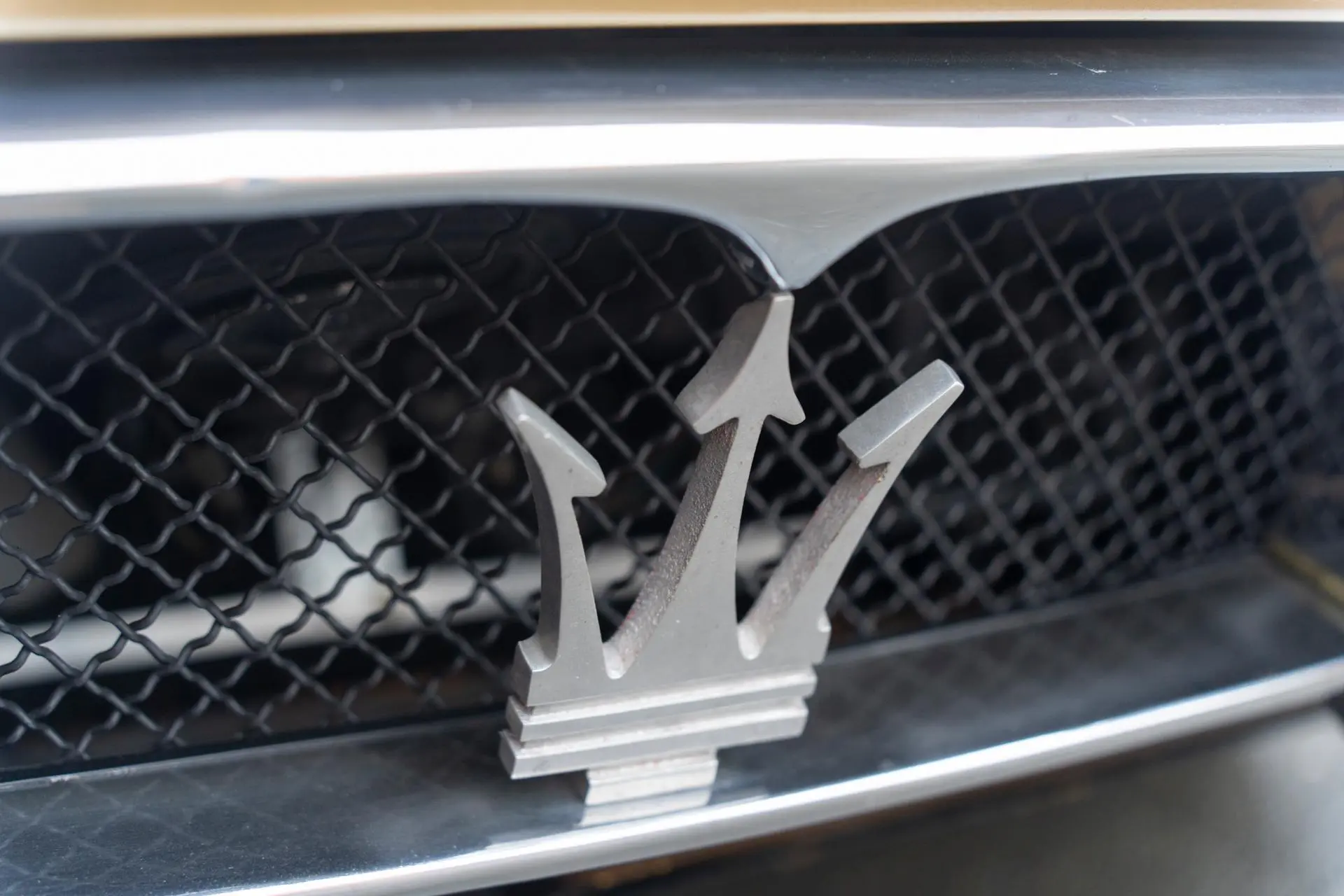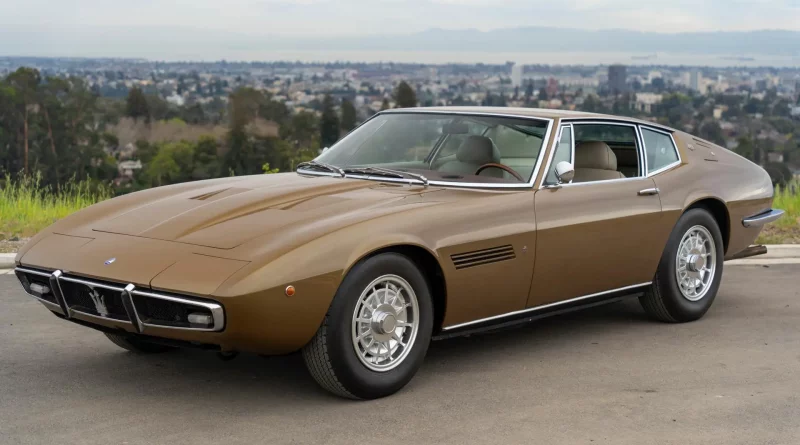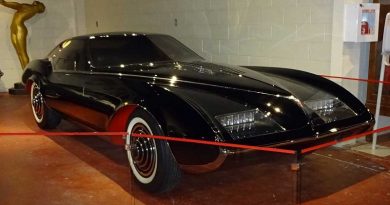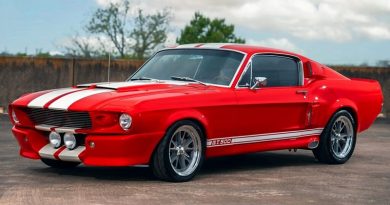1970 Maserati Ghibli SS 4.9 Coupe
The dream of owning a Maserati Ghibli is one of those recurring exotic-car fantasies that I used to think might actually one day come true. They were, after all, cheap for decades, moving from being a must-have fashion trinket of the playboy classes to irrelevant GT dinosaur in one easy move. They are not even all that rare in exotica terms: 1295 cars in six years makes a Ghibli positively common compared to any Iso or Monteverdi you care to name. In fact, the Ghibli was the most successful of the classic V8 Maseratis, and a curious case of a firm’s most expensive car also being its biggest seller.

The Ghibli was introduced at the 1966 Turin Motor Show with steel bodywork styled by Giorgetto Giugiaro during his time with Carrozzeria Ghia.
Campagnolo 15” cast alloy wheels are outfitted with simulated knock-off hubcaps and wear Pirelli Cinturato tires, while a spare in the rear cargo compartment is wrapped in non-matching Pirelli rubber. Stopping is handled by servo-assisted ventilated disc brakes at each corner, and stainless-steel hoses were added.

The cabin is trimmed in beige leather over the seats, console, door panels, and lower dash, with matching carpeting over the floors and rear cargo area. Additional features include brown mousehair dash trim, headrests, tan lap belts, air conditioning, power windows, a four-way adjustable steering column, and an Autovox cassette stereo. The wood-rimmed steering wheel features a small horn button and frames Veglia Borletti instrumentation including a 300-km/h speedometer, a tachometer with a 5,500-rpm redline, and an oil pressure gauge. Instruments to the driver’s right include a clock and gauges monitoring coolant temperature, amperage, oil temperature, and fuel level.
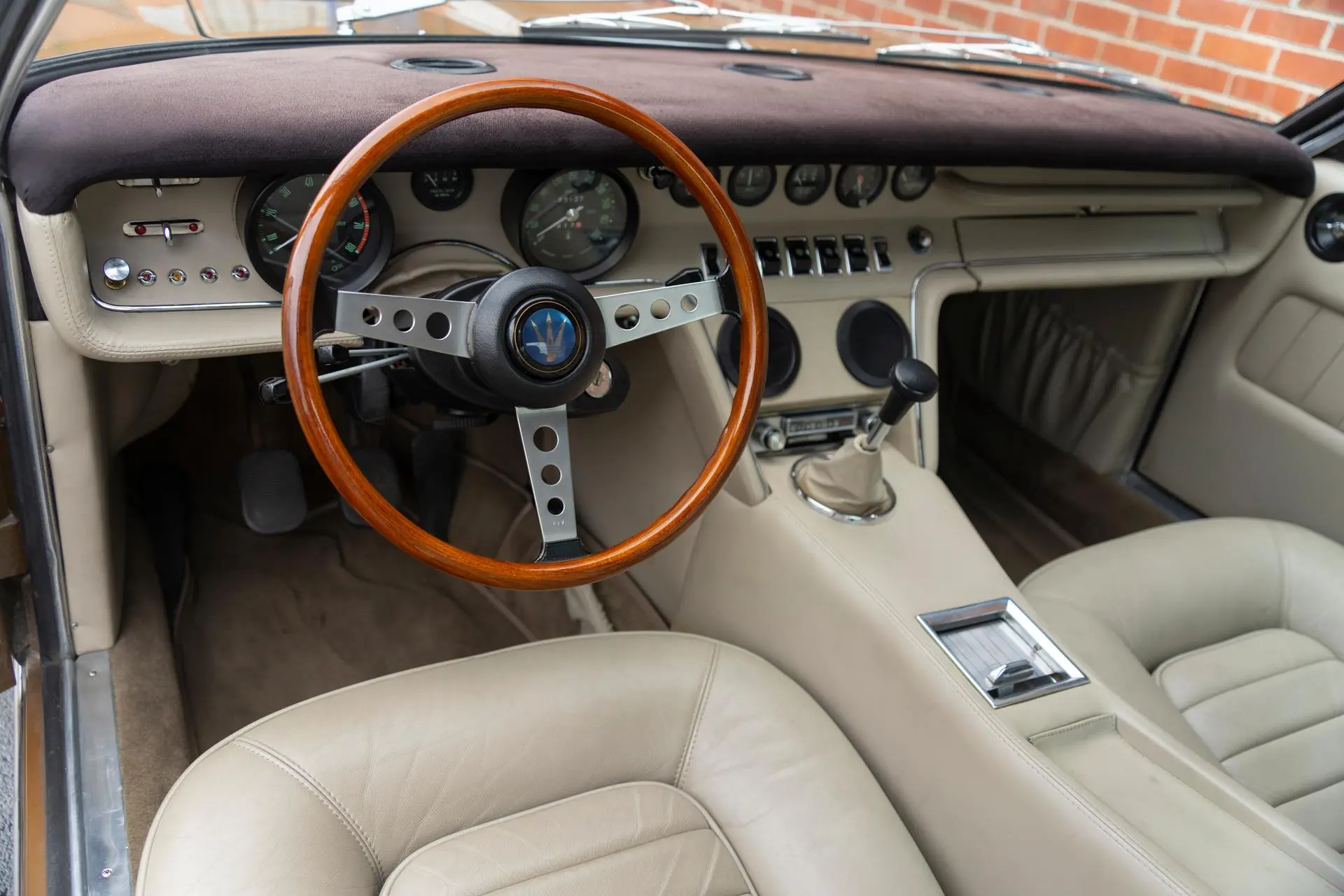
The SS variant’s 4.9-liter V8 is an enlarged evolution of the standard Ghibli’s powerplant and features an aluminum block and cylinder heads, dual overhead camshafts on each cylinder bank, dry-sump lubrication, and quadruple Weber 42 DCNF carburetors. Output was factory rated at 335 horsepower at 5,500 rpm.

Like the contemporary Mexico 2+2, the Ghibli used a shortened version of the Quattroporte saloon’s tubular steel chassis in its live rear axle form. Perhaps surprisingly, the Ghibli set-up used leaf springs and a single locating arm in preference to the more complex suspension arrangements favoured by its rivals. The power unit was Maserati’s venerable, four-cam, 90-degree V8, an engine derived from that of the 450S sports racer and first seen in road-going guise in the 5000GT. This was used in 4.7-litre form up to 1970 when it was superseded by the 4.9-litre ‘SS’ version in order to meet ever more stringent emission laws. The gain in horsepower was minimal but in either case performance was stunning, with 100mph (160km/h) attainable in under 16 seconds. This neck-snapping acceleration resulted from the V8’s enormous torque, which made the Ghibli one of the most flexible and easy-to-drive GTs of its era. One of the most stunning sports cars ever made, the Ghibli was a worthy rival for the Ferrari ‘Daytona’ and represents exceptional value for money today, just as it did 40 years ago.


‘It differs from many cars of similar performance in that it is equally as suited to going to the opera as blasting down to Palermo on the Autostrada.’ – Road & Track.
Unrepeatable.

